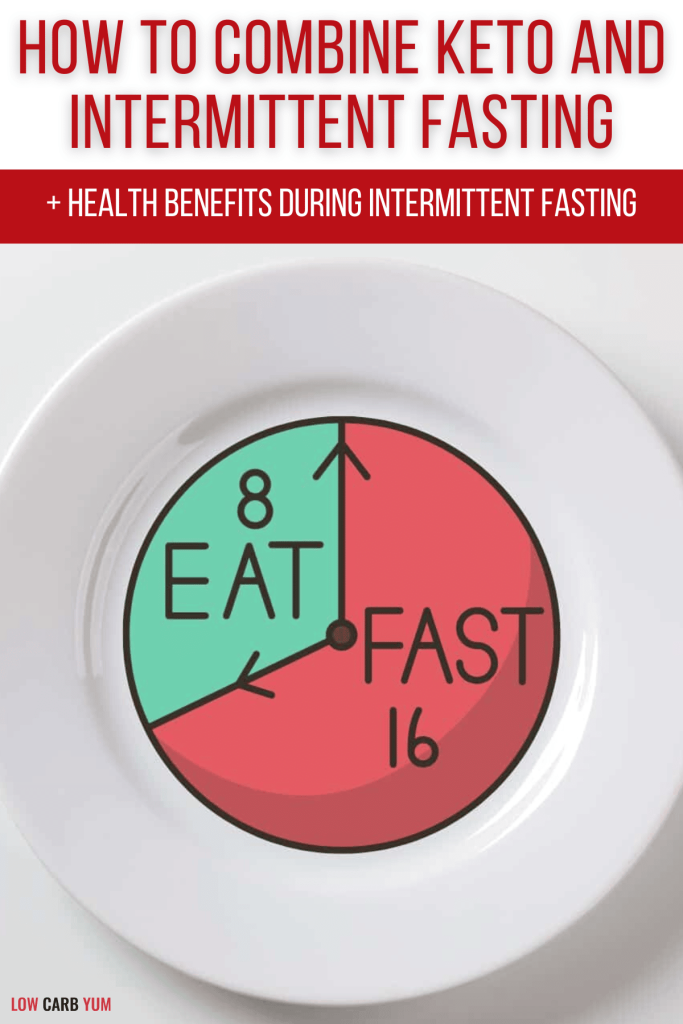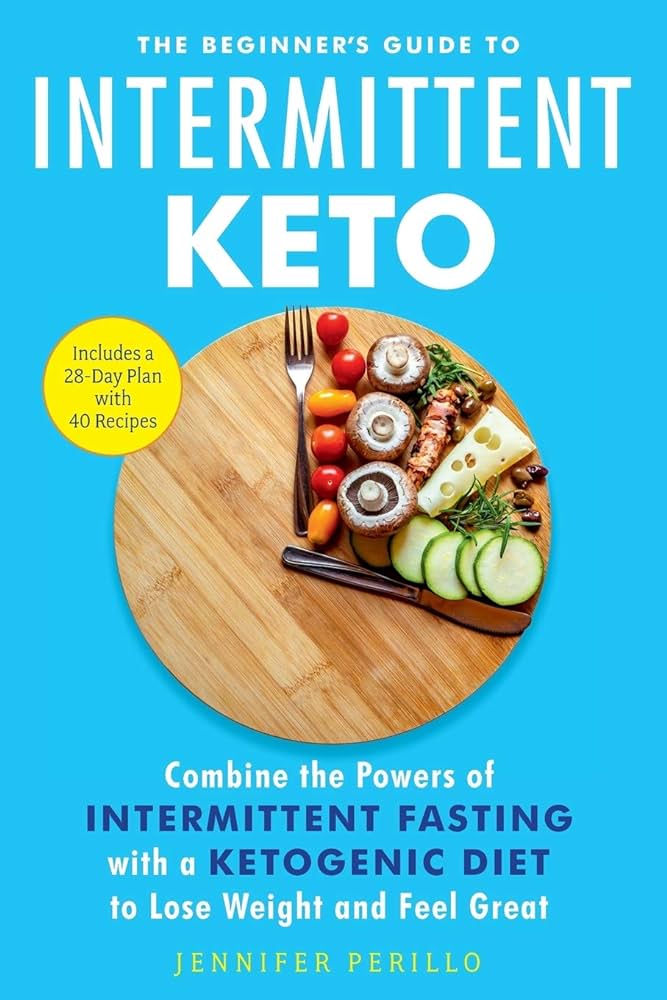You’re about to embark on a fascinating journey that explores the incredible benefits of combining two popular health trends: intermittent fasting and the keto diet. Whether you’re looking to lose weight, improve your overall well-being, or boost your energy levels, this winning duo has the potential to transform your life. Discover the science behind this powerful combination and unlock the key to achieving your health and fitness goals. Get ready to embark on a transformative lifestyle change that will leave you feeling invigorated and revitalized like never before.
What is Intermittent Fasting?
Definition
Intermittent fasting is an eating pattern that alternates between periods of fasting and eating. Rather than focusing on what you eat, it puts emphasis on when you eat. The main objective is to limit the time window in which you consume food, allowing your body to reap a variety of benefits.
Different types of intermittent fasting
There are several popular methods of intermittent fasting, including the 16/8 method, where you fast for 16 hours and consume all your meals within an 8-hour window; the 5:2 method, where you eat normally for five days and restrict your calorie intake to 500-600 calories for two non-consecutive days; and the alternate day fasting method, where you alternate between fasting days and eating days.
Benefits of intermittent fasting
Intermittent fasting has been shown to offer a range of benefits to your body and overall well-being. It can aid in weight loss, improve insulin sensitivity, promote cellular repair, reduce inflammation, and even boost brain function. Additionally, intermittent fasting may help regulate hormone levels and improve your overall metabolism.
How intermittent fasting works
When you enter a fasting state, your body essentially runs out of glucose, the primary source of energy. As a result, it starts to tap into its fat stores for fuel, leading to increased fat burning. Additionally, intermittent fasting triggers cellular repair processes and can help regulate hormone levels, leading to improved overall health.
What is Keto?
Definition
The ketogenic diet, or keto for short, is a low-carb, high-fat diet that has gained immense popularity in recent years. It involves drastically reducing your carbohydrate intake and replacing it with healthy fats to transition your body into a state of ketosis.
Principles of the ketogenic diet
The key principle of the ketogenic diet is to restrict carbohydrates and replace them with fats. By doing this, your body enters a metabolic state called ketosis, where it becomes incredibly efficient at burning fat for energy. This shift in fuel source can lead to significant weight loss and an improvement in overall health.
Benefits of the ketogenic diet
The ketogenic diet offers various benefits, beyond just weight loss. It has been shown to improve insulin sensitivity, lower blood sugar levels, and reduce inflammation. Additionally, many individuals report increased energy levels, mental clarity, and overall improved well-being while following the ketogenic diet.
How the ketogenic diet works
By drastically reducing your carbohydrate intake, you force your body to rely on fat for fuel instead. This leads to the production of ketones, which are molecules that fuel your brain and other organs. The ketogenic diet encourages your body to become efficient at utilizing fat as a primary energy source, which can result in weight loss and other health improvements.

The Benefits of Combining Intermittent Fasting and Keto
Increased fat burning
By combining intermittent fasting and keto, you can optimize your body’s fat-burning capabilities. When you fast, your body depletes its glucose stores, and then, when you transition to a low-carb, high-fat diet like keto, your body continues to use fat as its primary source of fuel.
Improved insulin sensitivity
Both intermittent fasting and keto have been shown to improve insulin sensitivity. Intermittent fasting helps to regulate blood sugar levels and reduce insulin resistance, while the ketogenic diet reduces carbohydrate intake, resulting in lower blood sugar levels and improved insulin sensitivity.
Enhanced weight loss
The combination of intermittent fasting and a ketogenic diet can be highly effective for weight loss. By restricting your eating window and consuming a low-carb, high-fat diet, you can maximize fat burning and decrease overall caloric intake, leading to sustainable and significant weight loss results.
Reduced inflammation
Both intermittent fasting and the ketogenic diet have been linked to reduced inflammation levels in the body. Chronic inflammation is associated with various health conditions, and by combining these two approaches, you can potentially experience a reduction in inflammation and its related symptoms.
Boosted brain function
Research has shown that both intermittent fasting and the ketogenic diet can have positive effects on brain health and function. Intermittent fasting stimulates the production of brain-derived neurotrophic factor (BDNF), which promotes brain cell growth and protects against neurodegenerative diseases. The ketogenic diet provides a stable supply of energy to the brain and has been shown to improve cognitive function and mental clarity.
Preserved muscle mass
When combined properly, intermittent fasting and a ketogenic diet can help preserve muscle mass during weight loss or body recomposition efforts. By consuming adequate protein and engaging in resistance training exercises, you can support muscle growth and maintenance while maximizing fat loss.
How to Combine Intermittent Fasting and Keto
Choosing an intermittent fasting schedule
To combine intermittent fasting and keto effectively, it’s essential to choose an intermittent fasting schedule that suits your lifestyle and preferences. The 16/8 method, where you fast for 16 hours and have an 8-hour eating window, is a popular choice. However, you may also experiment with other fasting schedules to find what works best for you.
Determining the ideal macronutrient ratios
When following a ketogenic diet, it’s crucial to determine the appropriate macronutrient ratios for your specific goals. Generally, a standard ketogenic diet consists of approximately 70-75% fat, 20-25% protein, and 5-10% carbohydrates. However, individual needs may vary, so consider consulting with a nutritionist or healthcare professional for personalized guidance.
Planning meals and snacks
Meal planning is key when combining intermittent fasting and keto. Prepare your meals and snacks in advance to ensure that you have nutritious, keto-friendly options readily available during your eating window. Focus on whole, unprocessed foods and include a variety of fats, proteins, and low-carb vegetables in your meals.
Managing cravings and hunger
As your body adapts to intermittent fasting and the ketogenic diet, you may experience cravings and hunger sensations initially. To overcome this, ensure that you are consuming enough healthy fats, staying hydrated, and incorporating fibrous, low-carbohydrate foods into your meals. It is also helpful to have keto-friendly snacks on hand to curb cravings.
Monitoring progress and adjusting as needed
Regularly monitor your progress both in terms of weight loss, body composition changes, and overall well-being. Adjust your macronutrient ratios, fasting schedule, or caloric intake if necessary to optimize your results. It can be helpful to keep a food journal and track how different approaches affect your body and overall health.

Meal Ideas for Intermittent Fasting and Keto
Fasting-friendly breakfast options
During your eating window, you can enjoy keto-friendly breakfast options that keep you satisfied and energized. Try a protein-packed omelette, avocado with smoked salmon, or a keto-friendly smoothie made with coconut milk, spinach, and nut butter.
Low-carb and high-fat lunch ideas
For lunch, focus on incorporating healthy fats and nutrient-rich ingredients. Opt for a salad with olive oil-based dressing and grilled chicken, a lettuce wrap filled with avocado and turkey, or a piece of grilled salmon with roasted vegetables.
Protein-rich dinner recipes
Dinnertime allows for hearty meals that are rich in protein and healthy fats. Enjoy a delicious steak or grilled chicken breast with a side of non-starchy vegetables like broccoli or cauliflower rice. You can also try recipes such as salmon baked with lemon and butter or zucchini noodles with pesto and grilled shrimp.
Snack choices to keep you satisfied
To stay satiated between meals, choose keto-friendly snacks that are low in carbohydrates and high in healthy fats. Options include nuts and seeds, hard-boiled eggs, beef jerky, or a handful of olives. Additionally, you can make your own keto-friendly snacks like fat bombs or enjoy some cheese with cucumber slices.
Hydration and beverage suggestions
Staying hydrated is crucial when following an intermittent fasting and ketogenic diet. Drink plenty of water throughout the day, and consider adding electrolytes to your water to replenish essential minerals. You can also enjoy herbal teas, black coffee, or unsweetened sparkling water to add variety to your hydration routine.
Exercise and Fitness with Intermittent Fasting and Keto
The role of exercise in the combined approach
Regular exercise is a key component of a healthy lifestyle and can enhance the effects of intermittent fasting and the ketogenic diet. Exercise helps increase energy expenditure, promotes muscle growth, and supports overall well-being. It is important to find an exercise routine that you enjoy and that aligns with your fitness goals.
Recommended types of exercise
To maximize results with intermittent fasting and keto, focus on a combination of cardiovascular exercise and strength training. Incorporate activities such as brisk walking, cycling, or swimming for cardiovascular health, and incorporate resistance training exercises like weightlifting or bodyweight exercises to boost muscle growth and maintenance.
Timing of workouts in relation to meals
Experiment with the timing of your workouts to find what works best for your body. Some individuals prefer to exercise in a fasted state, while others find it more comfortable to eat a small meal or snack beforehand. Listen to your body and adjust accordingly, ensuring that you have enough energy for effective workouts.
Pre- and post-workout nutrition tips
Before a workout, consume a small, easily digestible meal or snack that provides sustained energy. Consider options like a handful of almonds, a piece of fruit, or a protein shake. Afterward, replenish your body with a balanced meal that includes protein for muscle recovery, healthy fats for satiety, and carbohydrates (if within your dietary limits) to replenish glycogen stores.

Common Challenges and How to Overcome Them
Keto flu and potential side effects
When transitioning to a ketogenic diet, some individuals may experience symptoms known as “keto flu,” which can include fatigue, headaches, and irritability. To overcome this, ensure you are properly hydrated, consume enough electrolytes, and gradually reduce your carbohydrate intake to allow your body to adapt more comfortably.
Dealing with hunger during fasting periods
Hunger can be a common challenge during fasting periods, especially when transitioning to intermittent fasting. To manage hunger, ensure that your meals during your eating window are nutritious and satisfying. Stay hydrated throughout the day and consider incorporating appetite-suppressing foods such as avocados, chia seeds, or foods high in fiber.
Social situations and dining out
Social situations and dining out can present challenges when combining intermittent fasting and keto. Plan ahead by researching menu options or suggesting keto-friendly restaurants. If there are limited options, focus on ordering protein-rich dishes with non-starchy vegetables and ask for modifications to accommodate your dietary needs.
Maintaining motivation and consistency
Staying motivated and consistent can be challenging, especially when adopting new dietary and lifestyle changes. Set realistic goals, track your progress, and celebrate even small achievements. Seek support from friends, family, or online communities to stay motivated and share experiences.
Potential Risks and Precautions
Individual differences and medical conditions
It’s important to acknowledge that individual differences may affect how you respond to intermittent fasting and a ketogenic diet. Some people may experience adverse effects or may not benefit from these approaches due to underlying medical conditions. If you have any concerns or pre-existing conditions, consult with a healthcare professional before starting any new diet or fasting regime.
Consulting with a healthcare professional
Before embarking on an intermittent fasting and ketogenic diet, it is recommended to consult with a healthcare professional or registered dietitian. They can help assess your personal health needs, provide tailored guidance, and monitor your progress along the way.
Choosing high-quality ketogenic foods
To ensure optimal health benefits, choose high-quality, nutrient-dense foods when following a ketogenic diet. Focus on consuming whole, unprocessed foods such as lean meats, fatty fish, eggs, avocados, nuts, seeds, and non-starchy vegetables. Avoid highly processed, sugary foods, and opt for organic or locally sourced options when possible.
Avoiding nutrient deficiencies
A ketogenic diet may restrict certain food groups, potentially leading to nutrient deficiencies if not properly balanced. To mitigate this risk, ensure you are consuming a variety of foods that provide essential vitamins, minerals, and dietary fiber. Consider supplementation if needed or consult with a healthcare professional to address any potential nutrient gaps.

Success Stories and Testimonials
Real-life experiences and transformations
Numerous individuals have experienced significant changes in their health and well-being by combining intermittent fasting and a ketogenic diet. Many people have reported substantial weight loss, improved energy levels, reduced inflammation, and enhanced mental clarity through this combined approach.
Benefits experienced by individuals
The benefits experienced by individuals who have adopted the combined approach of intermittent fasting and keto are varied and can include weight loss, increased stamina, improved digestion, stabilized blood sugar levels, reduced cravings, and enhanced focus and productivity.
Advice and tips from those who have succeeded
Those who have successfully combined intermittent fasting and keto often recommend finding a routine and schedule that fits their lifestyle. They stress the importance of planning meals, experimenting with different approaches, and seeking support from like-minded individuals or online communities for motivation and accountability.
Final Thoughts and Conclusion
Summary of the combined approach
Combining intermittent fasting and the ketogenic diet can provide a powerful tool for improving your overall health, achieving weight loss goals, and optimizing your well-being. By effectively managing your eating window, following a balanced ketogenic diet, and incorporating regular exercise into your routine, you can harness the benefits of these two approaches synergistically.
Long-term sustainability and lifestyle changes
While intermittent fasting and the ketogenic diet can yield impressive results, it’s essential to view them as part of a broader lifestyle change rather than a short-term fix. Long-term sustainability lies in adopting healthier habits, nourishing your body with nutrient-dense foods, and maintaining an active lifestyle.
Empowering individuals to take control of their health
The combination of intermittent fasting and keto can empower individuals to take control of their health and make positive changes in their lives. By understanding the principles, benefits, and potential challenges, you can personalize your approach and create a harmonious balance that works for your unique needs and goals. Remember to listen to your body, seek support if needed, and enjoy the journey towards a healthier, happier you.

